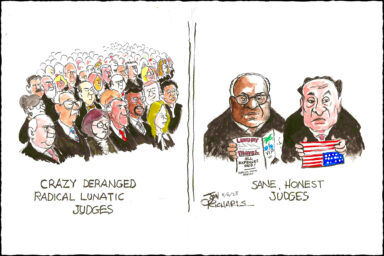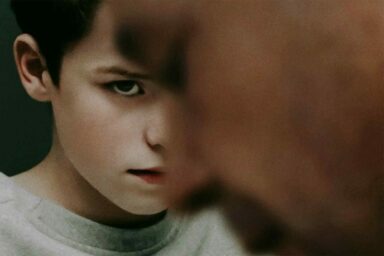What Truly Transcends Its Era? Comedy.
Assessing Buster Keaton a century later.
|
Listen To This Story
|
I recently watched Buster Keaton’s Seven Chances (1925) in a Parisian movie theater with a mostly under-12 crowd and their parents. I was there as a long-standing Keaton fan, but I was also curious what a young crowd would make of a silent film made almost a hundred years ago. Would a rabble of French youngsters, weaned on video games and the Marvel universe, be able to follow a small-imaged black-and-white, dialogue-free film scored by a one-man orchestra (he variously played piano, drums, cymbals, and bass clarinet).
To cut to the chase — and Keaton himself doesn’t take long getting there — they were.
Seven Chances begins, slightly worryingly, with the intertitles that were all too common in the silent films, a series of pithy jokes and puns based on aphorisms of the era. These of course had to be translated into French subtitles at the bottom of the screen, and I could feel some of the young crowd already getting a little restless (would they be forced to read the whole film?). But Keaton soon dispenses with these formalities and gets down to the business of comedy.
The film is really about the anxiety of marriage and, in the movie, Keaton eventually marries the woman he’s in love with, but he takes a circuitous route to get there. The opening scenes show him failing to propose to her over five seasons, delineated by the weather and the puppy the woman has, which has grown up to be a large dog by the time Keaton has failed in his mission by the second spring.
A junior partner in a business that has lent money to the wrong people, leading to ruin and possible scandal (even prison), Keaton is given a lifeline when it’s revealed he’s heir to a large fortune, providing he’s married by the age of 27. Today is his 27th birthday. Unless he gets married by 7 p.m., he and his business partner will be ruined.
That’s the set-up, and the children seemed to have no problem following it.
The first half shows Keaton proposing to a series of women and getting rejected every time. The second half, after an article appears in the local paper explaining his predicament and potential fortune, shows him trying to escape from a mob of would-be brides who show up at the church to marry him, but then turn on him when they think they’ve been tricked.
The sequence involving hundreds (thousands?) of women chasing a single potential husband is rightly famous — a hilarious sight gag — but it would have carried a sting in Europe in the 1920s. After the slaughter of World War I, there were about 40 percent fewer single men available for the unmarried woman of France. In the US, this wasn’t the case, and a century later it’s just a sight gag, even in Europe.
But I think the idea of a man hounded by would-be brides probably had its origins in Keaton’s own wariness of marriage and the pressure he felt to become attached and settle down. By 1925 he was trapped in an unhappy marriage to Natalie Talmadge, one of a trio of famous beauties who were also movie stars. Talmadge’s more famous sister Norma was married to the powerful producer Joseph Schenck, who happened to produce Keaton’s films. So it may have felt a little incestuous for Keaton, his business affairs tied up with his extended family.
Keaton’s first love was making films. His second was baseball. Marriage probably came in a distant third. In Seven Chances, the institution is not idealized or romanticized as it was in other films of the era, and his take may have also been a dig at that more common and hackneyed view.
Comedies made up only a small percentage of the films produced in the silent era, but they’ve dated much better than the melodramas, romances, and grand spectacles of the period. The inflections of emotion, the protocols of dating, and the technical sophistications of special effects have all changed over the years. But funny is funny.
Comedians also had the advantage of largely dispensing with those wordy intertitles. It seems curious to people today how many novels and plays were adapted for the soundless screen. How is Shakespeare performed in a silent film? But there were many of the Bard’s works adapted for the screen in the years before sound. These seem ludicrous to us now, a series of pageants interrupted by various quotes in titles.
But film comedies comport well to the purely visual medium, and a master of the form like Keaton was able to design a series of gags that read quickly on screen and still work for a contemporary audience.
 In each era, it’s often the comedies that have outlasted the dramas. The Victorians had such a dearth of staged wit that the history of theater seems to jump from Richard Brinsley Sheridan at the end of the 18th century to Oscar Wilde at the end of the 19th.
In each era, it’s often the comedies that have outlasted the dramas. The Victorians had such a dearth of staged wit that the history of theater seems to jump from Richard Brinsley Sheridan at the end of the 18th century to Oscar Wilde at the end of the 19th.
From the early days of television, what’s still watched most is I Love Lucy, not Gunsmoke, Dragnet, or The Lone Ranger. And in the UK, comedies such as Dad’s Army and the Morecambe & Wise Show from the ’70s are still regularly shown on TV as opposed to the dramas from that decade.
Will today’s comedies be watched in a hundred years? Can you picture the likes of Will Ferrell, Chris Rock, Amy Schumer, or Tina Fey enchanting a group of French kids consuming the content in some version of a streamed brain scan in 2123?
Who’s to say? But I’d put good money on Buster Keaton still cracking them up as they watch him running down a street in his smart wedding suit, chased by thousands of angry women in white veils and bridal gowns. That’s an image for the ages.
—
J.B. Miller is an American writer living in England, and is the author of My Life in Action Painting and The Satanic Nurses and Other Literary Parodies.




